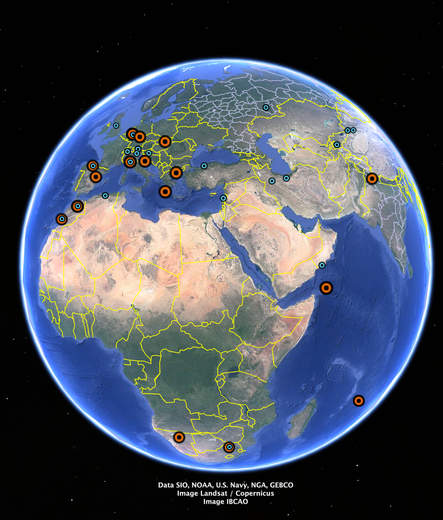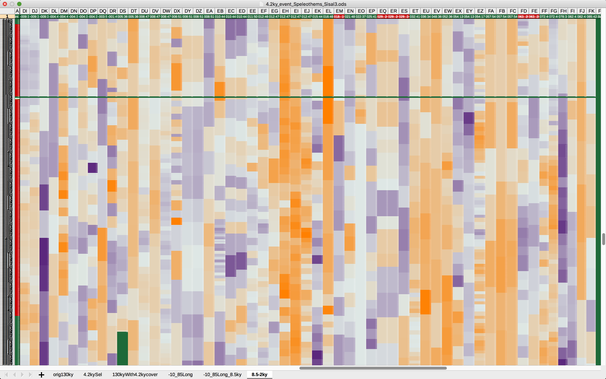Interesting.
From what I recall from a few papers I read, the Mediterranean, or #MENA, experienced droughts in the 4.2ky event.
But figure 4 in the new literature review by #McKay et al 2024 shows a decidedly wet excursion for MENA: https://www.nature.com/articles/s41467-024-50886-w
They do mention the #Mediterranean and say, it were a complex and not at all clear case whether a drought was gripping the region or not.
So I pulled #d18O from cave #speleothem in the database " #Sisal3 " and plotted all those with okay resolution during the 4.2ky event.
The time span of the selection goes from 8.5ky to 2ky, like in McKay's paper.
My cave selection goes from longitude -9° to 85°E.
Locations are in the Google map, with the info whether it was dryer🔴 or wetter🌀 at 4.2ky.
A 3-colour-coded heatmap for the 50th percentile of d18O shows orange as drought and blue as wet.
More info in the ALT texts.
Conclusion: the mediterranean DID get dryer in the 4.2ky event. 🙂 🖖


